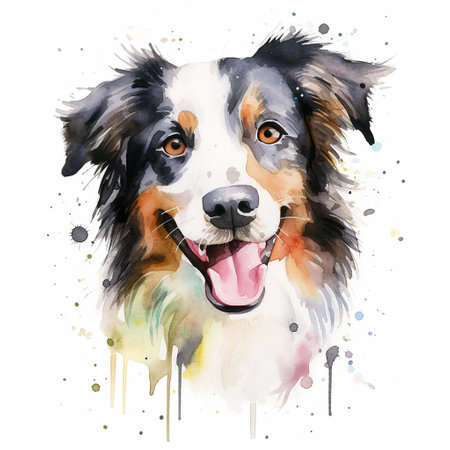Introduction to the UK’s Dog Breed Landscape
The United Kingdom has long held a deep affection for its canine companions, with dog ownership woven into the very fabric of British life. As we approach 2025, the landscape of popular dog breeds across the UK is evolving in response to changing lifestyles, urban living, and shifting family dynamics. More people than ever are seeking dogs that suit smaller homes or busy routines, while others are inspired by social media trends and celebrity influences. The surge in remote working has also encouraged many households to welcome a new four-legged friend. In this article, we’ll explore the factors shaping these trends and delve into which breeds are capturing the hearts of Britons, setting the stage for the year ahead.
2. Popular Breeds Making a Comeback
In recent years, there has been a noticeable resurgence in the popularity of traditional British dog breeds, as pet lovers across the UK rediscover the charm and companionship these classic canines offer. This renewed interest is particularly evident among families seeking heritage, character, and a strong sense of British identity in their four-legged friends. But what exactly is fuelling this revival? For many, it’s a longing for nostalgia paired with an increased awareness about supporting local breeders and preserving national canine heritage.
Heritage Breeds in the Spotlight
Several beloved British breeds are finding themselves back in the limelight. From the sturdy Staffordshire Bull Terrier to the elegant English Setter, these dogs are making remarkable comebacks thanks to their loyal temperaments, adaptability to family life, and suitability for both city and country living. Media exposure and social media campaigns highlighting their unique traits have also played a part in boosting their appeal.
Key Factors Driving the Resurgence
- Awareness Campaigns: Charities and breed clubs are working tirelessly to educate the public on the joys of adopting native breeds.
- Cultural Pride: Many Britons take pride in owning a dog with deep historical roots tied to the UK.
- Health & Longevity: Traditional breeds often boast robust health profiles when responsibly bred.
- Adaptability: Many of these breeds excel in both rural and urban settings, suiting modern lifestyles.
Traditional British Breeds on the Rise
| Breed | Distinctive Traits | Main Appeal |
|---|---|---|
| Staffordshire Bull Terrier | Loyal, affectionate, good with children | Family-friendly companion with a brave heart |
| English Setter | Gentle, graceful, intelligent | Sociable nature; suitable for active homes |
| Border Collie | Eager to please, highly trainable | Excellent for agility and countryside walks |
| Welsh Corgi (Pembroke) | Sociable, alert, adaptable | A royal favourite; perfect for smaller spaces |
This growing enthusiasm for British classics is not just about tradition—it’s about finding dogs that fit seamlessly into today’s households while keeping our shared history alive. By choosing these enduring breeds, owners contribute to the future of Britain’s canine legacy while enjoying loyal companions who stand the test of time.

3. Emerging Favourites: The New Kids on the Block
While time-honoured favourites like the Labrador and Cocker Spaniel continue to charm British families, 2025 is shaping up to be a year where several lesser-known breeds start making their mark in UK households. Many pet lovers are looking for unique companions that fit evolving lifestyles, and these “new kids on the block” are proving themselves more than up to the challenge.
One breed that has captured growing attention is the Kooikerhondje, a Dutch spaniel with an affectionate personality and eye-catching orange-and-white coat. Their adaptable nature and eagerness to please make them ideal for both city dwellers and countryside ramblers alike. As more Britons discover this energetic yet manageable companion, its popularity is quietly blossoming.
Another rising star is the Mudi, a Hungarian herding dog known for its intelligence and agility. With their keen alertness and loyalty, Mudis are gaining recognition among active families who enjoy outdoor pursuits across the UK’s beautiful landscapes. They’re also beginning to appear more frequently at local dog clubs, bringing a breath of fresh air to traditional breed rosters.
The Japanese Shikoku has also begun to turn heads among those seeking something truly distinctive. With their wolf-like appearance and spirited but gentle temperament, Shikokus are attracting admirers who value both beauty and companionship. While still rare, responsible breeders report growing inquiries from British homes eager to welcome this fascinating breed.
As British tastes diversify, there’s also increased curiosity about breeds such as the Barbet, a curly-coated French water dog with a playful disposition, and the Danish-Swedish Farmdog, which appeals to those who favour small but lively companions with big personalities. These emerging favourites highlight how dog ownership in the UK is evolving—embracing new possibilities while maintaining the cherished bond between humans and their canine friends.
4. Urban Choices: Breeds Suited for City Living
As more Britons embrace urban lifestyles, the demand for dog breeds that thrive in bustling city environments continues to grow. Not every breed can comfortably adapt to the compact flats, busy parks, and lively pavements typical of cities like London, Manchester, or Birmingham. This shift in living patterns has influenced which breeds are becoming increasingly popular among city dwellers. Below is a closer look at why certain dogs are better suited for city life and which breeds are trending upwards as a result.
Adaptability: The Key to Urban Success
The best dogs for city living tend to be those who are adaptable, sociable, and have moderate exercise requirements. These breeds must be comfortable with noise, crowds, and smaller living spaces while still being able to enjoy brisk walks through local parks or along riversides. Their size often makes them easy to transport on public transport or in lifts, and their temperament ensures they’re good neighbours in close-knit communities.
Top Trending City Breeds in 2025
| Breed | Why They Suit City Life |
|---|---|
| Cavalier King Charles Spaniel | Small size, friendly nature, low exercise needs |
| French Bulldog | Compact build, easy-going, minimal grooming required |
| Cockapoo | Intelligent, hypoallergenic coat, adaptable to routines |
| Pug | Affectionate, content with short walks, playful indoors |
| Dachshund | Loyal companions, don’t require large gardens, alert but not overly vocal |
Why Are These Breeds on the Rise?
The surge in popularity of these breeds is closely tied to the changing lifestyles of UK residents. With many people opting for apartment living and working from home more frequently, there’s an increased desire for pets that are content indoors and can adapt to flexible schedules. Additionally, breeds that require less grooming and exercise fit seamlessly into the busy routines typical of urban professionals.
Moreover, the UK’s pet-friendly culture—think dog-friendly cafés, pubs, and even workplaces—means that social and well-mannered breeds are particularly valued. These trending breeds not only provide companionship but also mesh well with the energetic pace of British city life.
5. Lifestyle Fit: Matching Breeds to the Modern British Family
Choosing the right dog breed is about far more than just looks—British families in 2025 are increasingly thoughtful about how a dog fits into their daily lives. With urban living, busy schedules, and varying access to green spaces, it’s no wonder that lifestyle fit is at the forefront of breed selection. Here are some tips and insights for finding the perfect canine companion for your home.
Space Matters: City Flats vs Country Homes
One of the first considerations is space. Many UK families living in city flats gravitate towards smaller breeds like French Bulldogs or Cavapoos. These dogs adapt well to limited indoor areas and require less outdoor roaming. In contrast, families with larger gardens or rural homes often favour energetic breeds like Labradors or Border Collies, who relish space to run and play.
Activity Levels: Matching Energy to Your Routine
Modern British life can be hectic, so matching a breed’s energy levels to your family’s activity is crucial. Active households may find joy in keeping up with a spirited Springer Spaniel or a lively Cockerpoo on countryside walks. For those with gentler routines or mobility concerns, calmer companions such as Whippets or older rescue dogs offer affection without demanding endless exercise.
Work-Life Balance: The Rise of Flexible Companions
With remote and hybrid working on the rise, many Brits now spend more time at home. This shift has popularised breeds known for their companionship, such as Dachshunds or Golden Retrievers, who thrive when included in daily family life. Look for breeds comfortable with changing routines and capable of being left alone occasionally without distress.
Children and Social Dynamics
For families with young children, temperament is paramount. Gentle-natured breeds like Cavaliers and Labradors continue to trend upwards thanks to their patience and tolerance. It’s always wise to observe interactions carefully and choose a dog whose personality harmonises with your household’s dynamics.
Tips for Choosing Your Ideal Breed
- Assess your weekly schedule honestly—can you provide daily walks or only shorter bursts of play?
- Consider future changes: will your living situation or work pattern shift soon?
- Research breed-specific needs around grooming, health care, and exercise.
- If adopting, speak openly with shelters about your lifestyle—they’re excellent at matchmaking!
By thoughtfully considering lifestyle fit, British families are welcoming dogs that not only reflect current trends but also become cherished members of their homes—bringing joy, comfort, and companionship tailored to modern life.
6. Health and Well-being Trends Shaping Breed Selection
The way we choose our canine companions in Britain is undergoing a thoughtful transformation, with health and well-being now at the forefront of breed selection. Across the UK, there’s a growing awareness that responsible ownership extends far beyond loving cuddles and daily walks; it involves making informed decisions that support both the physical and emotional welfare of our dogs.
Prioritising Canine Welfare
Concerns over hereditary health issues—such as respiratory problems in brachycephalic breeds or joint disorders in larger dogs—are prompting more prospective owners to seek breeds known for robust health. This shift is reflected in the rising popularity of crossbreeds like the Cockapoo and Labradoodle, celebrated for their hybrid vigour, as well as traditional working breeds bred for stamina and soundness.
Ethical Breeding and Transparency
Brits are increasingly turning to ethical breeders who prioritise health screenings and transparent practices. The Kennel Club’s Assured Breeder Scheme and other similar initiatives are playing a vital role in guiding families toward reputable sources, helping ensure puppies get the best possible start in life.
Mental Well-being Matters Too
The mental health of our four-legged friends is also shaping breed choices. Owners are selecting breeds whose temperaments match their lifestyles—whether it’s a lively Border Collie for active countryside living or a placid Cavalier King Charles Spaniel for quieter urban homes. This thoughtful approach supports lifelong harmony between dog and owner, reducing stress for everyone involved.
Championing Rescue Dogs
Another heartening trend is the increased interest in rescue dogs. Many Brits are choosing to adopt rather than shop, giving deserving dogs of all backgrounds a second chance. This shift not only eases pressure on breed-specific health concerns but also promotes a compassionate, welfare-focused ethos within local communities.
All told, the landscape of dog ownership in Britain is evolving with a keen eye on health, happiness, and responsible stewardship—ensuring that as certain breeds rise in popularity, their welfare remains at the very heart of every decision.
7. Conclusion: What to Expect for UK Dog Breeds in 2025 and Beyond
As we reflect on the evolving landscape of dog ownership in the UK, it’s clear that our preferences are shaped by more than just trends—they’re influenced by shifting lifestyles, housing situations, and a growing commitment to canine welfare. The breeds rising in popularity for 2025 reflect a nation increasingly mindful of responsible pet ownership and eager to find companions that suit both urban flats and countryside cottages alike.
Looking ahead, we can expect continued interest in breeds that blend adaptability with charm—think smaller dogs like the Cockapoo or Cavapoo for city dwellers, or hardy yet affectionate breeds such as the Labrador Retriever and English Springer Spaniel for those with a bit more space. Ethical breeding practices are likely to take centre stage as well, with more Brits choosing reputable breeders or opting for rescue dogs from local shelters.
As Britain’s love affair with dogs endures, so too does our responsibility to provide loving, thoughtful care for every wagging tail and furry friend. It’s heartening to see communities embracing positive training methods, enrichment activities, and health-conscious feeding routines. The future promises not just new “trendy” breeds, but a deeper connection between humans and their canine companions—rooted in understanding, patience, and genuine affection.
Whether you’re welcoming a new pup into your home or cherishing an old friend, staying informed about breed needs and trends will help ensure that every British dog continues to thrive well into 2025 and beyond.


